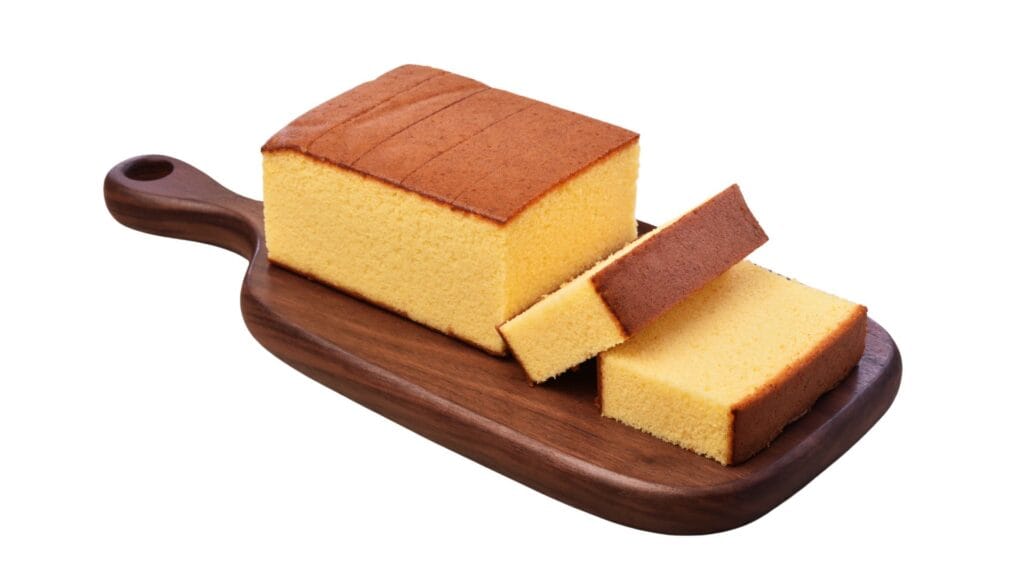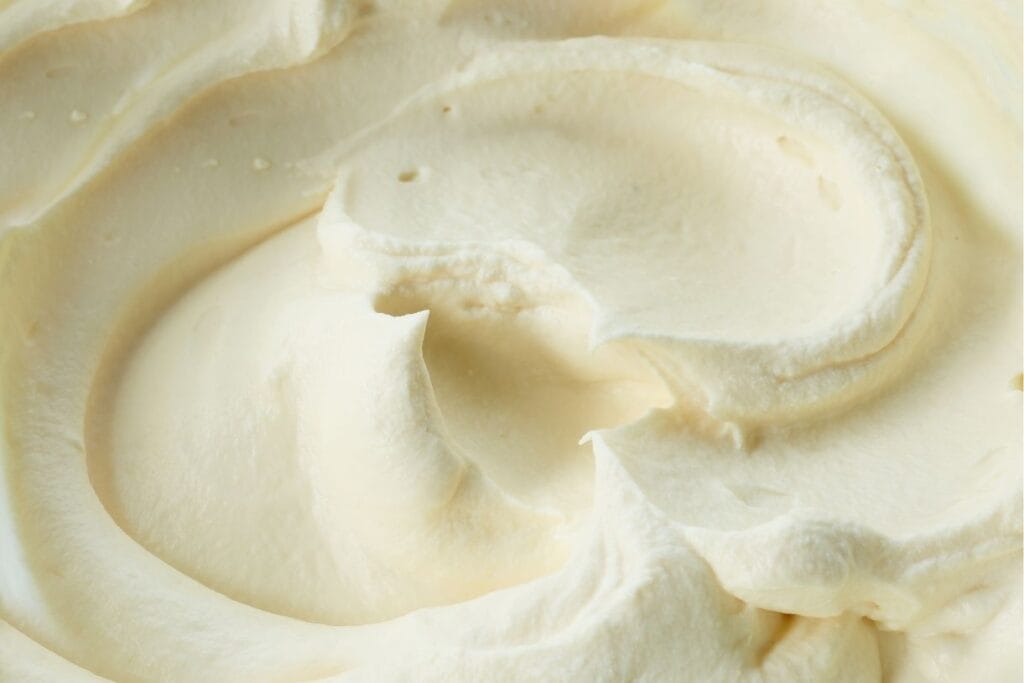Crafting Tomorrow’s Confections: The Rise of Healthy Cake Mix Materials
In the dynamic world of baking, where tradition meets innovation, there’s a quiet revolution taking place. It’s happening in the very heart of our beloved cakes: the mix. For food wholesalers, bustling restaurants and coffee shops, and large-scale food manufacturers, the ingredients that go into their creations are more critical than ever. Consumers today aren’t just seeking indulgence; they’re looking for mindful choices that align with a healthier lifestyle without sacrificing taste or experience. This shift has placed “healthy cake mix materials” firmly in the spotlight, transforming how we think about and produce delicious baked goods.
What is the Journey of Cake Mixes?
The story of cake mixes is a fascinating one, deeply intertwined with societal changes and technological advancements. What began as a simple convenience has evolved into a sophisticated blend of science and culinary art.
How Did Cake Mixes First Come to Be?
The concept of a pre-mixed baking ingredient dates back further than many might imagine. Early forms of convenience mixes appeared in the late 19th century. However, the true birth of what we recognize as cake mix came in the 1930s. The first patented cake mix was developed in 1933 by P. Duff and Sons, a molasses company in Pittsburgh. Their initial product was a blend of dehydrated molasses, flour, sugar, and dried eggs, needing only water to create gingerbread. This innovation was, in part, a clever way for them to utilize a surplus of molasses.
The real boom for cake mixes arrived after World War II. With flour companies like General Mills and Pillsbury facing a surplus of flour, they turned to cake mixes as a new market opportunity. By the 1950s, the market was flooded with hundreds of cake mix companies. These early mixes promised ease and speed, appealing to a post-war society eager for convenience. Interestingly, early versions often included powdered eggs, but sales reportedly plateaued as consumers psychologically preferred adding fresh eggs, leading companies to revise their formulas. The idea was to make baking less work, but not too easy, allowing the baker to still feel a sense of accomplishment.


What is Turkey’s Connection to the World of Convenient Baking?
While the direct historical narrative of “cake mixes” specifically in Turkey isn’t as widely documented as in Western markets, Turkey has a rich and ancient baking tradition that embraces innovation and diverse ingredients. Turkish confectionery, like the renowned Turkish Delight (lokum), dates back centuries, showcasing a deep-rooted expertise in combining flavors and textures.
The introduction of convenient baking ingredients in Turkey can be linked to the broader arrival of global food product trends and established international brands. For instance, companies like Dr. Oetker, which introduced ready-to-use baking powder in Germany in 1893, gradually expanded their product ranges internationally, including to Turkey. Dr. Oetker’s “Turkish Style Pudding” from 1924 further illustrates the integration of convenient mixes into the Turkish culinary landscape. These early introductions of baking powders and pudding mixes laid the groundwork for the eventual widespread adoption of more complex cake mixes, reflecting a continuous evolution towards accessible and efficient baking solutions for both homes and businesses. The Turkish market, known for its discerning palate and appreciation for quality, has steadily incorporated these modern conveniences while maintaining its strong heritage of fresh and wholesome ingredients.
What Different Kinds of Cake Mixes are Available Today?
The versatility of cake mixes has expanded dramatically beyond basic yellow or chocolate. Today, the market offers a diverse range to cater to every baking need, from classic comfort to specialized dietary requirements. For food businesses, understanding these categories is key to meeting broad consumer demands.
What are the Classic and Everyday Varieties?
These are the foundational options that form the backbone of any bakery or restaurant’s dessert menu:
- Sponge Cake Mixes: Designed for light, airy, and delicate cakes, often used for layered desserts or roulades. These mixes are prized for their consistent volume and fine texture.
- Yellow Cake Mixes: A staple, known for their rich, buttery flavor and often a bright, inviting hue. They are incredibly versatile for various frostings and fillings.
- White Cake Mixes: Offering a pure, clean flavor profile, these are ideal for elegant wedding cakes or any creation where a pristine white appearance is desired.
- Chocolate Cake Mixes (including Devil’s Food and Fudge): Ranging from rich and dark to intensely fudgy, these are perennial favorites. Devil’s Food mixes often provide a deeper, darker chocolate experience.
- Crème Cake Mixes: These are formulated to produce exceptionally moist and tender cakes, often requiring only water, egg, and oil for a rich, delicious result. They are excellent for creating cakes and muffins with superior moisture and an even texture, providing a good shelf life for commercial operations.


Are There Specialized Mixes for Unique Creations?
Beyond the classics, specialized mixes help businesses offer a wider array of unique and on-trend options:
- Red Velvet Cake Mixes: Known for their distinctive color and subtle cocoa flavor, often paired with cream cheese frosting.
- Carrot Cake Mixes: These mixes often include real dried carrot and spices, delivering the comforting, aromatic flavor of homemade carrot cake with consistent results.
- Angel Food Cake Mixes: Specifically formulated for an incredibly light and airy cake, traditionally made without added fats, relying on whipped egg whites for structure.
- Madeira Cake Mixes: A denser, yet still moist, cake type that holds up well for carving and decorating, often used for fruit cakes or as a base for intricate designs.
- Specialty Flavored Mixes: The market also offers mixes for flavors like lemon, strawberry, spice, pineapple, French vanilla, German chocolate, orange, and even unique blends like fudge marble or Swiss chocolate, allowing for endless creativity.
These varied options empower food businesses to easily produce a wide range of baked goods, ensuring consistent quality and flavor, which is crucial for large-scale production and customer satisfaction.
How Can We Create Healthier Cake Mixes Without Compromising on Taste?
The demand for “healthier indulgence” is a significant trend, driven by consumers who are increasingly health-conscious but unwilling to forgo their treats. This creates an exciting challenge and opportunity for pastry and bakery raw materials manufacturers. Crafting cake mixes with improved nutritional profiles requires thoughtful ingredient selection and innovative formulation.
What Whole Grains and Alternative Flours Can We Use?
Moving beyond conventional refined flours is a crucial step towards healthier mixes.
- Whole Wheat Flour (especially White Whole Wheat): While regular whole wheat flour can make baked goods darker, white whole wheat flour offers the full nutritional benefits of a whole grain while resulting in a lighter-colored and milder-flavored cake. It provides fiber, which is important for gut health and overall well-being.
- Ancient Grains: Flours from ancient grains like einkorn, emmer, and spelt can add unique flavors and enhanced nutritional value, including more vitamins, minerals, and protein.
- Oat Flour: Oats are gaining popularity for their high beta-glucan fiber content, protein, vitamins, and minerals, making them an excellent gluten-free option when sourced and processed correctly.
- Seed Flours: Flours derived from seeds such as sunflower seed flour, linseed (flaxseed) flour, sesame flour, hemp, chia, and even watermelon seeds are emerging alternatives. These can boost protein and omega-3 content, as well as add interesting textures and flavors.
- Gluten-Free Blends: For those with sensitivities, incorporating certified gluten-free flours like rice flour, almond flour, or a blend of gluten-free grains ensures inclusivity. The demand for gluten-free products continues to rise, indicating a clear market for these options.


What Natural Sweeteners and Sugar Alternatives are Best?
Reducing added sugar is a major focus for health-conscious consumers.
- Natural Sugar Alternatives:
- Date Sugar: Made from dried, ground dates, it offers a natural sweetness with fiber and nutrients.
- Coconut Sugar: Derived from the sap of coconut palms, it has a caramel-like flavor and retains some minerals.
- Maple Sugar: Granulated maple syrup, providing a distinct flavor profile and natural origin.
- Sucanat (Sugarcane Natural): A less-processed form of cane sugar that retains some of the molasses content.
- Sugar Alcohols and High-Intensity Sweeteners:
- Erythritol: A sugar alcohol that is calorie-free and does not raise blood sugar levels, often used in keto-friendly formulations.
- Stevia: A natural, calorie-free sweetener derived from the stevia plant.
- Allulose: A rare sugar that has very few calories and does not impact blood sugar, making it suitable for low-carb and keto products.
- Fruit Purees: Replacing some of the sugar and fat with fruit purees like mashed banana or unsweetened applesauce can add moisture, natural sweetness, and nutritional value. Pineapple, for instance, can be used to add moisture and flavor.
How Can We Incorporate Healthier Fats and Protein Boosters?
Fats are crucial for texture and moisture in cakes, but healthier choices can make a significant difference. Protein content is also a growing interest for many consumers.
- Healthy Fats:
- Coconut Oil: A plant-based alternative to vegetable oil, offering a unique flavor and perceived health benefits.
- Olive Oil/Avocado Oil: Light-colored varieties can be used to replace traditional oils, adding healthy monounsaturated fats.
- Ghee: Clarified butter that provides a rich flavor and is sometimes preferred for its nutritional profile.
- Protein Boosters:
- Plant-Based Proteins: The inclusion of plant-based protein powders or flours (like pea protein or rice protein) can increase the protein content, catering to the growing demand for high-protein baked goods.
- Flaxseed Meal: A great source of omega-3 fatty acids and fiber, it can also act as an egg substitute in vegan formulations.
- Greek Yogurt: Can be incorporated for moisture and a protein boost, especially in homemade-style mixes, or as a component in a healthy frosting.
- Eggs (High-Quality): For mixes that still require fresh eggs, emphasizing the use of high-quality, organic eggs can appeal to health-conscious consumers.
What Other Functional Ingredients Can Enhance Health?
Beyond the core ingredients, other additions can elevate the health profile of cake mixes:
- Fiber-Rich Ingredients: Beyond whole grains, ingredients like chicory root fiber (inulin) or psyllium husk can boost fiber content, supporting gut health.
- Probiotics and Prebiotics: With gut health being a top priority, integrating probiotics or prebiotics (like fructooligosaccharides) can transform a treat into a functional food.
- Natural Colors and Flavors: Opting for colors derived from fruits and vegetables (e.g., beetroot for red velvet, turmeric for yellow) and natural extracts for flavor aligns with clean label trends and consumer desire for recognizable ingredients.
- Reduced Sodium: While less talked about in cakes, conscious reduction of sodium aligns with broader health guidelines and can be achieved through careful formulation.
By strategically selecting and combining these healthy ingredients, manufacturers can produce cake mixes that not only deliver on taste and texture but also meet the evolving demands for nutrition and wholesome indulgence. This approach is key to capturing the attention of food businesses seeking to offer better-for-you options to their customers.


Which Cake Flavors Are Always in Demand?
While new and exciting flavors constantly emerge, certain cake mix flavors remain consistently popular, forming the bedrock of consumer preference across all target audiences – from wholesale distributors to individual coffee shops. Understanding these timeless favorites is crucial for any business focused on volume and consistent sales.
What are the Indispensable Classics?
These flavors transcend trends and evoke a sense of comfort and familiarity. They are the workhorses of the cake world, consistently requested and appreciated.
- Vanilla: The quintessential “plain” flavor, yet anything but. Vanilla cake mixes are incredibly versatile, serving as the perfect canvas for endless frosting and filling combinations. It is a consistently popular flavor in wholesale offerings.
- Chocolate (including Devil’s Food and Fudge): No surprise here. Chocolate cake is a universal favorite, and mixes provide varying intensities and richness, from classic milk chocolate to deep, dark devil’s food or intensely fudgy versions. The deep, satisfying taste of chocolate ensures its enduring appeal.
- Yellow/Butter Golden: Similar to vanilla but often with a richer, more buttery note, yellow cake mixes are beloved for their tender crumb and ability to pair with almost any flavor profile. They often bring a sense of nostalgic comfort.
- White Cake: Crisp and clean in flavor, white cake mixes are perfect for elegant, celebratory cakes where a pure, uncolored base is desired. It’s often associated with festive occasions.
What About the Universally Loved Specialty Flavors?
Beyond the absolute staples, several other flavors have cemented their place as perennial favorites due to their distinctive profiles and broad appeal.
- Red Velvet: With its striking color and unique blend of vanilla, cocoa, and a hint of tang, red velvet has grown from a regional specialty to a global phenomenon, particularly popular for its visual appeal and distinctive taste.
- Carrot Cake: A comforting classic, especially popular with those seeking a more “homestyle” or subtly spiced option. Mixes often contain real carrot pieces and a blend of warm spices like cinnamon and nutmeg.
- Lemon: Bright, zesty, and refreshing, lemon cake offers a welcome contrast to richer flavors. It’s especially popular in warmer months or for those who prefer a lighter dessert.
- Angel Food: This exceptionally light and airy cake, almost meringue-like in texture, is a delicate and fat-free option often enjoyed with fresh fruit. Its unique structure sets it apart.
These commonly sought-after flavors are essential for food wholesalers, food businesses, and manufacturers aiming to cater to a wide customer base while ensuring consistent product quality and reliable sales. They offer a foundation upon which more innovative, health-focused versions can be built, providing a balanced portfolio of offerings.


How Can Businesses Leverage Healthy Cake Mixes for Growth?
In today’s competitive culinary landscape, simply offering delicious cakes isn’t enough. Food wholesalers, food businesses, and food manufacturers need to strategically adapt to evolving consumer preferences. Healthy cake mix materials present a significant opportunity for growth by tapping into current market trends and expanding customer reach.
How Do Healthy Mixes Meet Evolving Consumer Demands?
The modern consumer is more informed and health-conscious than ever before. They are not just looking for a sweet treat; they are seeking “health-conscious indulgence” – products that taste great but also align with their wellness goals.
- Addressing Dietary Needs: With increasing rates of dietary restrictions and preferences, offering gluten-free, dairy-free, or vegan cake mixes, often made possible with healthy ingredients like flaxseed meal or plant-based milks and fats, directly caters to a broader customer base.
- Focus on Nutrient Density: Consumers are becoming “mindful nutritionists,” actively looking for foods that offer more than just empty calories. Mixes enriched with whole grains, fiber, and protein address this demand, turning a dessert into a more wholesome option.
- Clean Label Appeal: There’s a strong desire for transparency and simplicity in ingredients. Cake mixes made with natural sweeteners, recognizable flours, and fewer artificial additives resonate strongly with consumers seeking “clean label” products.
- Sustainability as a Value: The provenance of ingredients and their environmental impact are increasingly important. Sourcing sustainable, ethically produced raw materials for cake mixes not only appeals to consumers but also supports a responsible business model.
How Can Restaurants and Coffee Shops Benefit?
For individual food businesses, healthy cake mixes offer several distinct advantages:
- Expanded Menu Offerings: Easily introduce a wider range of baked goods, including options for specific dietary needs (e.g., gluten-free chocolate cake, high-fiber muffins, low-sugar lemon loaf), without extensive recipe development.
- Operational Efficiency: Pre-mixed ingredients ensure consistent quality and flavor across batches, reducing preparation time and labor costs. This consistency is vital for maintaining brand reputation and customer satisfaction.
- Increased Customer Loyalty: By demonstrating a commitment to health and wellness, businesses can attract new customers and foster loyalty among existing ones who appreciate the thoughtful choices. Offering options that cater to health-conscious individuals makes a business more inclusive.
- Competitive Edge: In a crowded market, offering distinct “healthy indulgence” options can differentiate a business from competitors who rely solely on traditional, less health-aligned offerings.
How Can Food Manufacturers and Wholesalers Thrive?
For larger entities, embracing healthy cake mix materials offers opportunities for market expansion and brand leadership:
- New Product Development: Rapidly develop and launch new product lines that align with cutting-edge health and wellness trends, such as high-protein dessert bars, reduced-sugar cupcakes, or whole-grain breakfast pastries.
- Market Share Growth: Capture segments of the market that are actively seeking healthier options, including institutions, health-food retailers, and consumers with specific dietary requirements.
- Brand Reputation Enhancement: Position the brand as innovative, responsible, and responsive to consumer needs. This strengthens brand perception and builds trust.
- Supply Chain Optimization: Work with suppliers who can provide high-quality, sustainably sourced, and health-aligned raw materials, ensuring a robust and ethical supply chain. This aligns with increased scrutiny in sustainability reporting.
The integration of healthy ingredients into cake mix materials is not merely a trend; it’s a fundamental shift in how the baking industry operates. By embracing this change, food businesses can not only meet current consumer demands but also proactively shape the future of delicious and wholesome baked goods.


What Does the Future Hold for Cake Mixes?
The evolution of cake mixes is far from over. As consumer priorities continue to shift, so too will the innovations in bakery ingredients. The future promises even more sophisticated solutions that balance convenience, taste, and well-being.
What Innovations Can We Expect?
The industry is constantly pushing boundaries, driven by research and consumer feedback:
- Personalization and Customization: Imagine mixes that can be easily customized with specific healthy add-ins or tailored to individual nutritional needs through online platforms, making every bake truly unique.
- Advanced Functional Ingredients: Expect to see more ingredients that offer tangible health benefits, beyond just fiber or protein. This could include ingredients that support cognitive function, enhance mood, or provide specific micronutrients, transforming cakes into truly “smart” foods.
- Clean Label 2.0: The concept of “clean conscience” will likely supersede traditional clean labeling, pushing for deeper transparency about the entire supply chain, including ethical sourcing and environmental impact. Consumers will want to know the complete story behind their ingredients.
- Sustainable Packaging and Production: Beyond the ingredients themselves, the environmental footprint of packaging and manufacturing processes will become even more critical. Biodegradable packaging and energy-efficient production methods will define leading brands.
- Hyper-Convenience Meets Health: While current mixes offer convenience, future innovations may further simplify healthy baking. This could involve “just add water” options for more complex, health-aligned recipes, or even pre-portioned, single-serve healthy mixes.
How Will Technology Influence Baking Innovations?
Technology will play an increasingly vital role in shaping the future of cake mixes:
- AI-Driven Formulations: Artificial intelligence could analyze vast datasets of consumer preferences and ingredient interactions to create perfectly balanced, healthy, and delicious new cake mix formulations, optimizing for taste, texture, and nutritional profile.
- Precision Fermentation: This cutting-edge technology could produce specific, highly functional ingredients (like certain proteins or fats) with a reduced environmental footprint, offering sustainable alternatives for cake mixes.
- 3D Printing for Bakery: While still emerging, 3D food printing could allow for highly customized and intricate cake designs using healthy mix-based “inks,” opening up new creative avenues for bakeries and food businesses.
- Blockchain for Transparency: Implementing blockchain technology could provide unparalleled transparency in the supply chain, allowing consumers to verify the origin and quality of every ingredient in their cake mix, from farm to factory.
The future of cake mixes is vibrant and promising, moving towards a world where delightful indulgence and robust well-being coexist harmoniously. For food wholesalers, food businesses, and food manufacturers, staying ahead of these trends will be key to unlocking new opportunities and continuing to delight customers with innovative, wholesome, and delicious baked goods.


Why Choose PMF for Your Pastry and Bakery Raw Materials?
At PMF, we understand the evolving needs of the bakery industry. As a dedicated pastry and bakery raw materials manufacturer in Turkey, we are committed to providing high-quality ingredients that meet the demands of discerning food wholesalers, food distributors, and food businesses. Our focus is on empowering you to create delicious, consistent, and increasingly healthier products that captivate your customers. We offer a comprehensive range of solutions, including superior cake mix materials, designed to help you innovate, optimize, and grow in a competitive market.
Explore our range of pastry solutions, including our versatile sponge cake mixes, to discover how we can support your business’s success: Sponge Cake Mixes by PMF.



